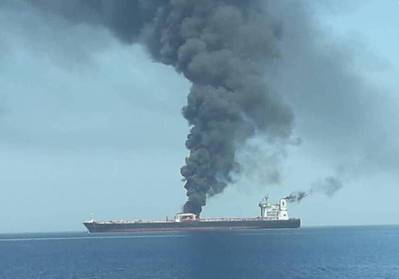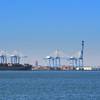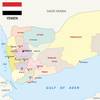Oil Prices Jump 2% After Tanker Attacks
Oil prices settled 2.2% higher on Thursday after attacks on two oil tankers in the Gulf of Oman stoked concerns of reduced crude trade flows through one of the world's key shipping routes.
The attacks near Iran and the Strait of Hormuz reignited worries about an impact to flows from the Middle East if insurance companies begin to reduce coverage for voyages through the region and additional shipping companies suspend new bookings, analysts said.
Such a disruption "could further exacerbate the supply problem," said Andy Lipow, an analyst at Lipow Oil Associates in Houston.
Oil tanker owners DHT Holdings and Heidmar suspended new bookings to the Mid-East Gulf, three ship brokers said.
"This is the second attack in a month's time," said John Kilduff, a partner at Again Capital LLC in New York. "It raises the ante for insurance risk."
Tensions in the Middle East have escalated since U.S. President Donald Trump withdrew from a 2015 multinational nuclear pact with Iran and reimposed sanctions, notably targeting Tehran's oil exports.
Iran, which has distanced itself from the previous attacks, has said it would not be cowed by what it called psychological warfare.
The episode also fed fears of a new confrontation between Iran and the United States, which blamed Tehran for the incident.
U.S. Secretary of State Mike Pompeo said the United States has assessed Iran was behind the attacks, and arrived at its conclusion based on intelligence, weapons used and the level of expertise needed for the attacks on the tankers in the Gulf of Oman.
Also supporting oil bulls were signs that Organization of the Petroleum Exporting Countries (OPEC) members were close to agreeing on continued production cuts.
Brent crude futures settled up $1.34, or 2.23%, at $61.31, having risen as much as 4.5% to $62.64.
U.S. West Texas Intermediate crude futures were up $1.14, or 2.23%, at $52.28 a barrel. WTI earlier rose as much as 4.5% to $53.45.
U.S. stocks rose after two days of declines, with the S&P energy index rising the most among the 11 major S&P sectors.
Analysts said the price swings were subdued by recent grim forecasts for global crude demand.
"It's a surprise that the market reaction has been so muted," said Derek Brower, a director at RS Energy Group. "For traders, worries about the weakening global oil-demand picture are front of mind and enough to trump real, live geopolitical threats to physical supply."
Global crude demand growth will come in at 70,000 barrels per day (bpd) less than previously expected this year, around 1.14 million bpd, OPEC projected in its monthly oil market report.
"Significant downside risks from escalating trade disputes spilling over to global demand growth remain," OPEC said in the report.
The U.S. Energy Department this week lowered its forecast of global demand to 1.2 million bpd, down by 200,000 bpd from its May forecast.
Analysts have also revised global oil demand growth forecasts lower after the U.S.-China trade war has escalated since last month with an expanding exchange of tariffs.
Energy consultancy FGE and British bank Barclays this week revised down their global oil demand growth forecasts to around 1 million bpd from around 1.3 million bpd.
The forecast revisions come as investors grow increasingly worried about trade talks between the United States and China, which may be revived at the G20 summit in Japan in late June.
"The market has settled into the idea that trade negotiations will be protracted," said Harry Tchilinguirian, global head of commodities research at BNP Paribas. "Naturally, the extension of trade disputes could weigh on economic growth."
Both crude benchmarks are set for their biggest daily rises since early January, but they are nevertheless headed for a weekly loss.
Oil prices had slumped in the previous session on an unexpected rise in U.S. crude stockpiles and a dimming outlook for global oil demand.
(Additional reporting by Shadia Nasralla and Aaron Sheldrick; Editing by Sonya Hepinstall and Phil Berlowitz)













